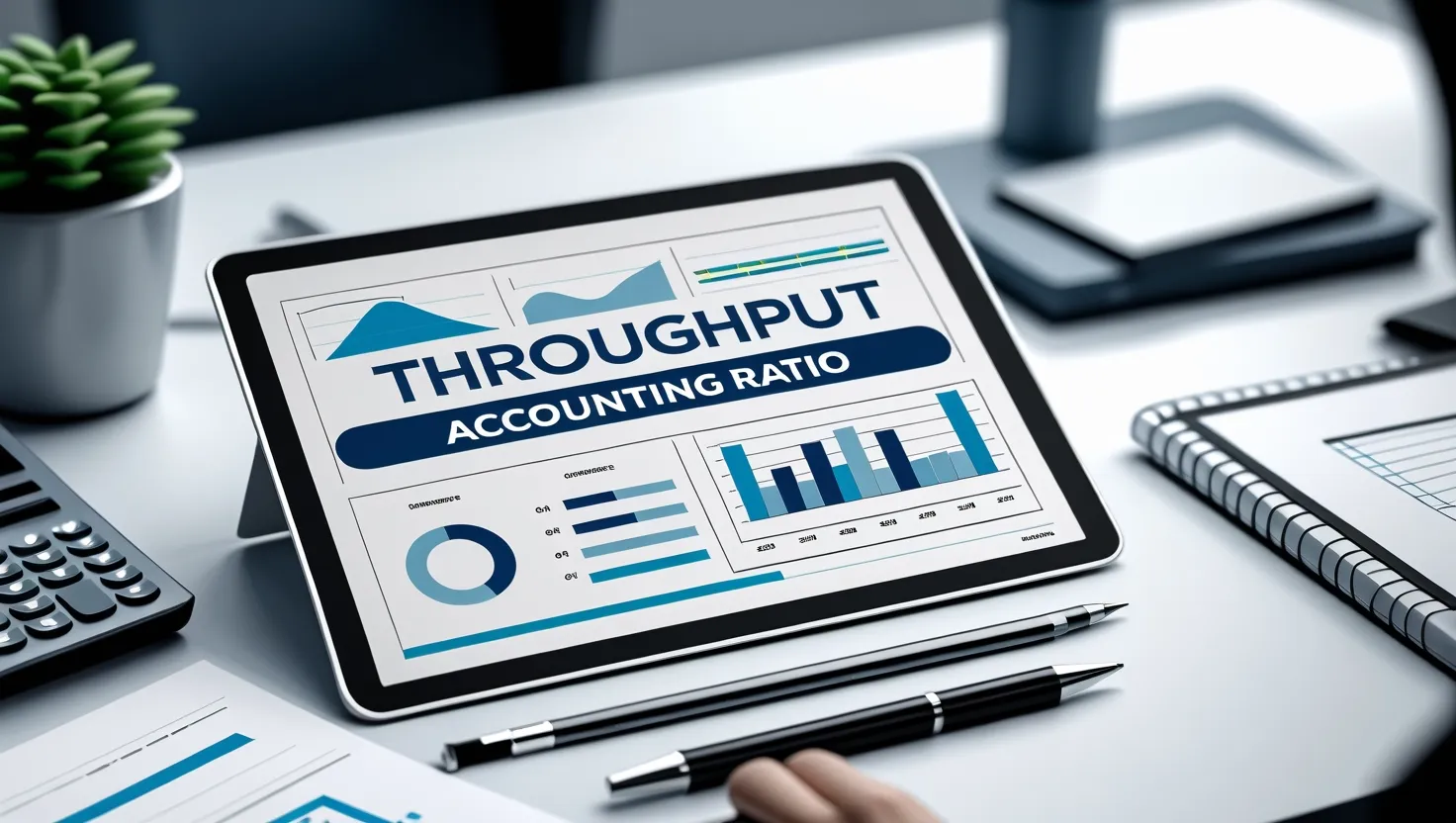
Introduction to Throughput Accounting Ratio #
What is the Throughput Accounting Ratio?
The Throughput Accounting Ratio (TAR) helps businesses measure how well they are doing. Unlike traditional accounting, throughput accounting does not focus on cutting costs. Instead, it looks at how fast a business makes money from sales.
This method uses the Theory of Constraints. This means finding and fixing problems, called bottlenecks, that slow down business growth. When businesses remove these obstacles, they can do better and make more money.
Why is This Important for Small Businesses?
Small businesses, especially in competitive markets like India, need to use their resources wisely. TAR helps them:
- Understand their profits in a simple way
- Manage resources wisely
- Stay ahead of competitors
How Does TAR Improve Business Efficiency?
Throughput accounting looks at how fast a business turns products or services into sales. This method helps businesses:
- Identify the weak points in their operations
- Improve efficiency
- Ensure steady growth and profits
Key Features of Throughput Accounting #
Focus on Throughput, Not Just Costs
Throughput Accounting (TAR) shifts the focus from merely cutting costs to maximizing revenue generation. Traditional accounting methods often emphasize reducing expenses, which can sometimes limit growth. TAR helps businesses find ways to boost sales and efficiency. It ensures that people use resources to generate the most income.
Companies can improve their profits by increasing throughput, which is how quickly they make money. This approach helps them create long-term growth plans rather than just focusing on short-term savings.
Better Business Insights
Throughput Accounting provides a more comprehensive understanding of a company’s financial and operational health. It not only considers revenue and costs but also examines how efficiently resources drive profitability.
This dual view helps business owners and managers make better decisions. They can balance financial performance with operational efficiency. With TAR, businesses can spot inefficiencies, improve processes, and enhance productivity without sacrificing quality or service.
Different from Traditional Accounting
Traditional accounting systems focus primarily on reducing expenses to improve profit margins. Cost control is important, but TAR focuses on generating revenue. It does this by improving efficiency and using resources better.
Instead of just tracking costs and cutting them, Throughput Accounting helps businesses improve their operations. This leads to higher sales and faster cash flow. This is especially helpful for businesses in fast-changing and competitive markets. In these markets, speed and efficiency are crucial.
Aligns Business Goals and Operations
Throughput Accounting ensures that all departments within a company are working toward the same goal—increasing throughput. In many businesses, different departments operate independently, sometimes leading to inefficiencies or conflicting priorities.
With TAR, businesses align their operations. This helps all teams focus on removing bottlenecks. It also increases production capacity and ensures smooth workflows.
This creates a clear plan. Every department, from sales and marketing to production and customer service, works to improve business efficiency.
Identifies Bottlenecks in Business
One of the best features of Throughput Accounting is that it can find and fix bottlenecks. These bottlenecks slow down production or sales.
In any business, constraints limit how much revenue the company can generate. These could be slow production processes, supply chain delays, inefficient staffing, or outdated technology. By pinpointing these obstacles, TAR helps businesses optimize operations, improve productivity, and increase profitability without unnecessary cost-cutting.
Makes Decision-Making Easier
Throughput Accounting simplifies decision-making by providing clear financial and operational insights. Business owners can quickly assess which actions will have the most impact on increasing revenue.
TAR helps businesses invest in faster production methods, improve sales strategies, and optimize resource use. This way, they can focus on activities that have the most impact. This skill helps in making quick decisions based on data. Highly beneficial in industries that experience fast market changes or strong competition.
Enables Real-Time Analysis
Throughput Accounting is different from traditional accounting. Traditional methods rely on periodic financial reports.
In contrast, Throughput Accounting allows businesses to monitor their financial health in real-time. This real-time data helps companies identify potential problems early and take immediate action before they escalate. Businesses using TAR can quickly respond to sudden drops in sales, supply chain issues, or rising production costs. This helps them minimize risks and losses.
Easy to Use with Modern Accounting Tools
Throughput Accounting works well with modern accounting and business management software. This includes ERP systems and financial software. Many small and medium-sized businesses use digital tools to track finances, manage inventory, and analyze sales data.
You can easily add TAR to these platforms. This helps companies watch their throughput, track efficiency, and improve performance. It does this without making their accounting processes more complex. By leveraging modern technology, businesses can gain a competitive advantage while keeping financial management simple and effective.
Benefits for Small Businesses #
- Boosts Profitability: By focusing on increasing throughput instead of cutting costs, businesses naturally increase their profits.
- Uses Resources Wisely: Small businesses often have limited resources. TAR helps them get the most out of what they already have.
- Improves Workflow: From production to sales, an efficient workflow makes business operations run smoothly.
- Reduces Costs Naturally: Although TAR focuses on revenue, improved efficiency often leads to lower expenses as a secondary benefit.
- Helps Plan for Growth: Businesses can better plan for how much they need to produce to meet customer demand.
- Sharpens Business Strategy: With clear insights, businesses can focus on core strengths and strategic goals.
- Improves Competitive Advantage: Businesses that use TAR gain a stronger market position by improving efficiency and profitability.
How to Use Throughput Accounting? #
- Identify Throughput: Throughput is the money your business makes from sales minus direct material costs.
- Measure Financials: Calculate throughput by subtracting material costs from total sales.
- Calculate the Throughput Accounting Ratio:
TAR = Throughput / (Operating Expenses + Investments)
Use Vyapar App to handle billing, stock & payments all in one place.
Make bills, track stock, and handle payments in one place.
